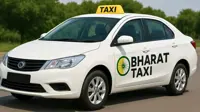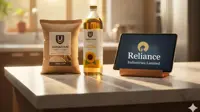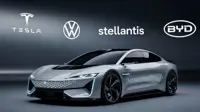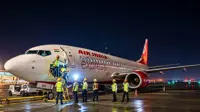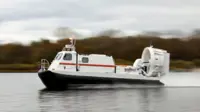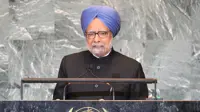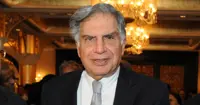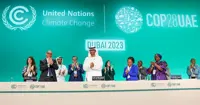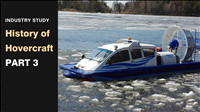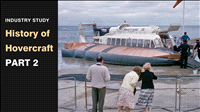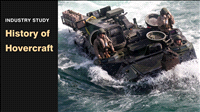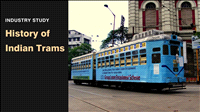Marketing review
09 Aug 2007
Dabur targeting
Rs100 cr from North India
Enthused with the growth that the FMCG sector
has shown in the country''s northern markets, FMCG company Dabur India Ltd is targeting
Rs100 crore (Rs1 billion) of revenue from this region.
In the past year, the company has seen business worth Rs80 crore from North Indian States comprising Punjab, Haryana, Jammu and Kashmir and Himachal Pradesh. It now plans to grow this to a revenue of Rs100 crore only from its FMCG segment.
Dabur India Ltd, recently re-launched its Odomos brand in Chandigarh, and is expecting 30-per cent growth from the sales of the Odomos range of mosquito repellants alone.
By itself, the Odomos brand showed revenues of about Rs30 crore for the company last year. The brand an almost 96 per cent market share in the mosquito repellant segment.
The company is expecting the new format of Odomos to be well received by customers in the Punjab and Haryana markets, given their importance for the brand as the two states together account for 17 per cent of all India sales.
Yash
Birla to a launch textile brand
After making his presence felt on almost
every Page 3, Yash Birla''s style may soon become the fashion statement for the
Indian metrosexual male.
Yash Birla shared his plans of launching a brand of his own, saying that he might even acquire an international brand and give it his personal touch, rather than developing one from scratch.
Birla Cotsyn, which formed a 50:50 joint venture with the P B Bhardwaj group to expand its textile business, has plans to invest over Rs300 crore for expansion, and is likely to soon hit the primary markets for funding the project, via an IPO.
Amazon
forays into selling fresh food
Online bookseller Amazon has signalled
its ambitions to challenge supermarkets, by commencing trials of fresh food deliveries
to customers in the 22,000-strong upmarket area of Mercer Island, an affluent
suburb of Seattle.
The pilot project is called AmazonFresh, which began quietly this week. It allows a select group of invited clients to order eggs, fish, vegetables, meat and other perishable foods, which are delivered by a fleet of 12 vans. AmazonFresh offers free daytime deliveries for orders over $50. Shoppers spending at least $25 can opt for "pre-dawn" deliveries, with goods left in refrigerated containers at their doorsteps during the night. The company said it was working with local wholesalers and farmers. The product range includes kosher, organic and wheat-free goods.
This is the latest in Amazon''s efforts at diversification. It has expanded its offering from its traditional stronghold in books and DVDs to now include electronic goods, sports equipment, toys and jewellery. Amazon began deliveries of dried foods across America last year.
According to an Amazon spokesman, "Our ambition is to be the place on the web where customers can find whatever they want. This trial is a chance for us to evaluate [fresh foods] as a business."
Delivering perishable food has a range of challenges, including far faster delivery times, and the food being kept at a controlled temperature. Though online grocery shopping is commonplace in Britain, supermarkets across America have struggled to crack internet ordering.
The highest profile failure was that of San Francisco-based WebVan. WebVan had spent more than $800 million building a network of warehouses and delivery centres before winding up in 2001. Similar short-lived ventures included HomeGrocer, ShopLink and Streamline.
AutomartIndia
re-brands itself as First Choice
Mumbai: AutomartIndia Ltd, the
used car mart has now got itself a new corporate identity -First Choice.
The new identity beings with it plans of extending used car services to include retail of spares and offering aftersales service to prospective customers, according to Andrey Purushottam, executive vice-president, office of strategy management at Mahindra & Mahindra Ltd.
According to experts, this venture would be a pioneering endeavour in the business of selling spares under an organised banner across the country, and will help promote the new brand across different channels of the auto industry.
First Choice''s new superstore would offer services that include a variety of cars, 10 bay repair centres, accessory stores and procurement bays (for the authentication of vehicle ownership and facilitation of change in ownership).
The company plans to launch 6 outlets in cities like Pune, Hyderabad, Bangalore and Delhi over the next 18 months. It plans to ramp up to over 200 such retail outlets over a period of two or three years, according to Mr Vinay Sanghi, CEO, First Choice. The company has set a goal of selling 25,000 used cars via these outlets by end 2009.
For brand promotions, First Choice plans to invest Rs10 crore across various media channels, and is planning a tie up with Indiatimes.com as a preferred partner for online used car sales over the internet. Talks are also in progress with other leading used car websites like eBay Motors and carwale.com.
Addressing customer retention for the sale of existing cars and the purchase of new cars, First Choice has tied up with 150 dealers across India to offer a one-stop solution to all existing car owners. The company is also setting up a 24-hr call centre to manage queries on the whole process of buying and selling a car, which is slated to be commence operations by end September 2007.
Casio
India plans brand revamp, sees potential in localising products
New Delhi:
Casio India Company Pvt Ltd is set to strengthen its brand positioning in
India via a specific category focus along with an aggressive marketing strategy.
The company has been present in India since 1996. This brand revamp and repositioning exercise has been undertaken to strengthen its market share in the various product categories in which the company operates. Outlining its strategy, the company has plans to launch more products, accompanied by aggressive marketing and promotional activities.
Casio intends to make musical keyboards, watches and calculators its key focus categories. The company''s strategy will see timely and regular launches of products that provides the latest technology at affordable prices. Musical instruments account for a 40 per cent market share, while Casio''s scientific calculators have secured almost 95 per cent of the market.
Product localisation to suite the requirements of Indian customers is another area in which Casio sees as a huge growth potential.
As part of its marketing strategies, the company will use regular marketing channels such as the print and Internet medium, with a heightened focus on below-the-line activities. Casio also intends to leverage modern retail trade to drive growth, using retail visibility to its advantage.
Presently, the company''s turnover is around Rs60 crore, which the company hopes to grow to Rs300-crore within the next five years, based on its growth strategy. Casio is also looking at launching its range of cameras and mobile phones, which are to be targeted at the premium classes.
Himalaya:
Beauty product sales not via the beaten track
Mumbai: The stereotype of
a beauty product advertising campaign - a girl in distress, and her saviour beauty
product - resolving all her beauty issues almost instantly while creating the
erstwhile absent "oomph" in her personality. Pick a women''s beauty or
personal care product, and this typical character transformation is the basic
theme of all advertising connected these products, across companies and products.
Finally, ayurvedic herbal healthcare products company Himalaya has decided against treading the beaten path. In its new ad campaign, which is in the offing, the commercial moves away from this conventional appeal which focus on glamour or celebrity endorsements. Instead, product benefits and Himalaya''s USP are interwoven into the advertisement''s narrative which ensure that the message communicated captures an experience that a number of young women will be easily be able to identify with.
Himalaya, has around 200 products in the estimated $1 billion domestic ayurvedic and herbal segments. Worldwide, the herbal healthcare market is valued at $65 billion, with export potential for the same growing at 15-18 per cent annually.
As a brand, Himalaya established itself though the now famed ''Dadima'' campaigns that were launched in 1999 and created an awareness around the company''s personal care portfolio. That campaign had the objective of dispelling commonly prevalent myths about Ayurveda, and had the additional responsibility to educate potential customers while securing a youth appeal.
The campaign established Himalaya as a company that backed Ayurveda scientifically. Following the Dadima campaign, there were several changes to the brand''s identity, with 2001 seeing television commercials that brought to life the concept of ''Active Ayurveda'', and 2003 seeing that message change to ''Active Herbals''.
Other than TV commercials, retail is a key growth strategy for the company, for which it is planning to integrate this concept across its retail presence. With 100 exclusive stores across India, Himalaya plans to double this number in the next few years. The company has identified eye care as an important focus area in the personal care segment, and has planned a foray into it shortly.
Jet
Airways debuts in continental Europe
Brussels: Jet Airways launched its
debut flight from Brussels to India, becoming the first private Indian carrier
to fly to and from continental Europe on Monday.
The Indian ambassador to Belgium and the European Union Dipak Chatterjee flagged off the flight. Jet Airways launched its first flight from Mumbai to the US with a two-hour stopover in Brussels on Sunday.
The airline will fly from India via Brussels to Toronto on 5th September, and to Johannesburg as of November 2007. Jet Airways established its operational hub in Brussels in May, to service enhanced connectivity between India, Europe, Africa and North America.
Nissan
to launch ''clean diesel'' vehicle in ''08
Tokyo: Nissan Motor Co. has unveiled
plans to launch its first ''clean diesel'' vehicle in Japan in 2008 to close the
gap with rivals in green motoring.
Japanese automakers are fiercely competing to be the first to launch low pollution diesel engines, which according to some analysts, could eventually supercede the popularity of petrol-electric hybrids due to their lower production cost.
Nissan announced that its new clean diesel engine, based on technology developed in alliance with French partner Renault, would be installed in the X-Trail sport utility vehicle, due to be introduced in Japan in autumn 2008.
In December 2006, Nissan had announced a five-year "green programme," that included plans to develop its own hybrid as part of a push to narrow the gap with rivals such as Toyota Motor Corp. and Honda Motor Co. in energy-efficient, low pollution motoring.
Nissan also announced that a new clean diesel technology it is developing shows good potential, and may even be able to meet the stringent laws and standards of the US state of California for so-called super-ultra-low emission vehicles.
Wal-Mart
and Bharti launch a 50:50 joint venture in India
New Delhi: Telecom
major Bharti jas joined forced with the world''s biggest retailer Wal-Mart Stores
Inc to form a joint venture for their wholesale cash and carry business.
The 50:50 joint venture is to be named Bharti Wal-Mart Pvt Ltd, with the first wholesale facility targeted for opening by end 2008. Over the next seven years, 10-15 wholesale facilities are part of the plans for expansion.
Each facility would be spread over an area of 50,000-100,000 square feet, and would sell vegetables, groceries, fruits, staples, footwear, stationary, clothing, consumer durables and other products, according to Rajan Mittal, managing director of Bharti Enterprises.
The JV company, plans to set up 10-15 stores in tier-II and tier-III towns over the next seven years, to cater to B2B customers such as other retailers, hoteliers, push-cart vendors etc.
Retail
formats: Predicted - it''s the hypermarkets which shall rule retail
Mumbai:
The retail world is clearly betting on the hypermarket to see growth beyond
all the hoopla surrounding them as of now. Hypermarkets offer customers a destination
shopping experience with everything available under one roof, similar to a mall
in its own right, according to Gibson Vedamani, CEO, Retailers Association of
India. By selling below the MRP, varieties are aplenty and environment conducive
to a great shopping experience, which is the why customers have started to prefer
this retail format in India.
This format has been successful in other emerging markets, and this success is seen as easily replicable in the Indian scenario given the popularity of organised retail spreading like wild fire. However, real estate prices are seen as a key factor in the growth of hypermarkets.
For a retailer, the hypermarket format allows all the benefits of being an anchor, with occupancy costs driven down drastically, and enabling him to play the volume game.
Given the availability of real estate in India today, supermarkets are easier to roll out compared as compared to hypermarkets. Most of the retailers are currently doing this. Going forward, Vedamani sees a shift in focus to hypermarkets, with supermarkets becoming today''s equivalent of Kirana stores.
This retail format has seen unparalleled success in Asian markets, according to an AT Kearney report. Pantaloon Retail''s large-scale success story arises from its hypermarket format, Big Bazaar. There are currently over 50 such stores in the country today. As part of the growth strategy, the Pantaloon Retail management is set to double the number of stores in the coming years.
Spencer''s is another large retailer to have recently restructured its retail business along the lines of the hypermarket format. Others like K Raheja Corp''s Hypercity also reportedly have plans to expand their network to primary and secondary cities. Mukesh Ambani''s Reliance Retail is ostensibly all set to unveil its first hypermarket which goes by the name ''Reliance Mart'' in Ahmedabad shortly.
According to the A T Kearney 2007 Global Retail Development Index, entitled "Growth Opportunities for Global Retailers", modern or ''organised'' Indian retail is a mere 2-3 per cent of the overall retail, but is growing at an astounding 25 per cent annually. It is expected to grow at a compounded annual growth rate (CAGR) of 40 per cent, from $8 billion to $22 billion by 2010. Overall, India''s retail sector is expected to grow in size from the current $350 billion to $427 billion by 2010, and further to $635 billion by 2015.
Medical
tourism to grow to $2 bn by 2012
New Delhi: Other than organised retail,
another segment that is showing astounding growth rates is India''s medical tourism
market, which is growing by 25 percent annually, and is estimated to become a
$2 billion-a-year business opportunity by 2012, according to sources in the tourism
ministry.
A ministry statement says, "Medical tourism has gained momentum in India over the past few years, a trend underpinned by India''s low-cost advantage and the emergence of new high-quality healthcare service providers".
2004 estimates of the medical tourism market in India were $333 million, with some 150,000 patients arriving for treatment from the US, Britain, the Gulf countries, Africa and South Asia Association for Regional Cooperation (SAARC) nations. In the past three years, the number of inward bound patients has increased by 20 per cent, while the size of the market has gone up by 25 per cent, the ministry said. To give medical tourism a boost, the Indian government has introduced a new category of medical visa for foreigners who come to this country for treatment.
The visa is initially issued to a patient with a companion for a one-year period, and is extendable up to three years, provided it fulfils certain conditions and recommendations from accredited medical and visa authorities. As part of the ''Incredible India'' campaign, the tourism ministry has also developed a medical tourism brochure and CD detailing speciality facilities available in India. These have been distributed worldwide.
Amongst other initiatives, the ministry participated at the World Travel Mart in London in November 2006, and at the International Tourism Bourse (ITB) at Berlin in March 2007. This participation was to promote India as the emerging healthcare destination and disseminate information on medical value travel. The participation enthused a good response, according to the ministry, which also participated in the New York Times Travel show in February 2007.
According to the Indian medical fraternity, the cost of what a medical treatment for a medical tourist is a fraction of what they would otherwise pay in the West as hospital bills. An added attraction is convalescing in picturesque locales like Kerala and Goa.
As an example, according to industry officials, the average price of a heart surgery in the West is $50,000, while the same costs $10,000 in India. Similarly, a heart bypass in India costs about $4,000, as compared to about $15,000 in the US; a liver transplant costs a patient $350,000 in the US, while in India it costs just $50,000.
The
Hot Chocolate Fudge (HCF) comes to town: Nirula''s plans expansion
New Delhi:
Delhi based fast food chain Nirula''s is planning a huge expansion, which will
see it investing much more than the Rs100 crore it had earmarked earlier over
the next three years.
This expansion is likely facilitated via a restructuring of Nirula''s ownership pattern. Navis Partners, a Malaysian private equity fund currently holds the majority stake in Nirula''s. It is learnt to be in negotiations with New York-based India Hospitality Corp (IHC) for offloading some of its equity in the chain. IHC is a special purpose acquisition company, learnt to be interested in buying out a part of Nirula''s equity in return for funding the chain''s expansion beyond North India.
The ultimate ownership of Nirula''s would remain distributed between Navis, and IHC, with managing director Sameer Kuckreja continuing as a minority shareholder. A 20 per cent stake is likely to change hands.
Nirula''s runs 52 outlets in five North Indian States. By 2010, the company plans to have 200 outlets across India. Presently, Nirula''s runs two hotels, three bars, four casual dining and other restaurants. Many new formats, i.e. food courts, and an express, ready-to-eat format - have been introduced.
The typical Nirula''s restaurant''s menu encompasses pizzas, burgers, popular Indian dishes such as kebab platters, Punjabi fares like chole bhature, south Indian palate teasers such as dosas, and an expansive, well stocked ice cream parlour, with its Sundaes, ice cream sodas, and the ever popular "HCF" or Hot Chocolate Fudge having endeared itself to the hearts and palettes of Delhites for generations.
From
Raheja''s, here comes Expresscity
Mumbai:With the success of its
hypermarket Hypercity in Mumbai, K Raheja Corp is now set to launch another retail
format under Hypercity Retail (India) Pvt Ltd. This new format is modelled around
convenience stores, and the company is all set to launch three such outlets starting
with Jaipur as the first.
Hypercity CEO Andrew Levermore said, "Another four Expresscity outlets will be launched within this financial year taking the total to seven in Jaipur alone. We will also have one Hypercity operational in Jaipur by then." The company plans to follow a hub-and-spoke kind of a model for its roll-out in every city, as it optimises logistical support for the hypermarket and convenience store format in these locations.
K Rajeja Corp management is looking at 250 Expresscity stores in 5 years, and is not restricting itself to any geography in particular. Echoing the popular sentiment amongst companies setting up their retail chains, Levermore said that the company will follow this structure in every market where real estate players are a little more realistic with the lease rentals. Real estate costs are seen as key to the success of organised retail in India.
The size of an Expresscity store will vary from 2,000 to 4,000 sq ft, which will have a product mix that different from competitors like Spinach, Foodland Fresh, Reliance Fresh, Spencer''s etc. Expresscity has been positioned as the convenience neighbourhood store, offering variety of fresh produce, grocery, meals-to-go, dairy products, bakery items among others.
Expresscity will offer pre-sorted, graded, freshly cut and hygienically packed fresh produce. These will be stored in refrigerated equipment that keeps the product fresh for a longer period of time.
The company is targeting some 68 Hypercity destinations across the country in the next five years. The company is learnt to have already frozen real estate for 28-odd locations.
Lufthansa
launches credit card with Deutsche Bank
Bangalore: Germans Deutsche Bank
and Lufthansa German Airlines announced the launch of the Miles & More credit
card in India, in association with Visa International.
The credit card packages all travel benefits needed by international frequent flyers, bringing the world of travel closer, according to a Deutsche Bank statement.
The Miles & More programme allows members to earn ''award miles'' whenever they fly Lufthansa or other partner airlines of the Star Alliance, stay at a variety of partner hotels, rent cars or use products and services of other Miles & More partners.
Bajaj''s
new 125cc `Exceed'' to launch in Sept
Pune:
Bajaj Auto will launch a new model Exceed, powered by its new engine in September
2007, announced Bajaj Auto Managing Director Rajeev Bajaj. Exceed is expected
to be priced at Rs40,000 ex-showroom (Pune), with the actual pricing to be decided
later.
Bajaj Auto has launched a new engine for its new two-wheeler range, which according to company claims gives a mileage of 109 km per litre of fuel under ideal test conditions. The engine, christened Digital Twin Spark--Swirl induction (DTS-Si) surpasses mileage offered by all current 100cc motorcycles. The company has applied for a patent for this engine.
The breakthrough offers Bajaj a huge market opportunity to upgrade existing 100cc motorcycle customers using the new engine, which offers the best of both worlds--100cc mileage with a 125cc performance. The DTS-Si engine is superior to conventional 4-stroke engines that presently dominate the 100cc segment.
According to Bajaj Auto general manager, marketing, Amit Nandi, Brand Bajaj has a 47-per cent market share of the growing and profitable 125cc and 150cc segments, and has a smaller 24 per cent of the declining but larger 100cc segment.
According to Bajaj, Exceed will bring in both volumes and market share for the company, along with a high earnings margin of about 15 per cent. He said the company will be effectively exiting the 100cc segment now, as the money was no longer in that segment. Bajaj sells the Platina model at Rs33,000, which the company claims does not make any money for them. The cost structure for 125cc `Exceed'' will be the same, yet Bajaj gets Rs4,000 more per product.
The company plans to make 20,000 Exceed motorcycles in September at the Aurangabad plant, later ramping up to 50,000 units in subsequent months. There are also plans to roll out part of the production from the new Pantanagar plant.
According to Bajaj, the current lull in the market is not solely on account of adverse interest rates, but also on account of the absence of an exciting product in the market.
Murdoch foresees
better days for Star India; plans channels
New York: Media baron Rupert
Murdoch says he is confident of a brighter future for the group''s Star business
in India under a new management. Star would be launching a number of new channels
in the next one year.
The rise in Star''s advertising and subscription revenue was primarily driven by its India operations. The increased advertising revenues reflect the broadcast on Star Plus of Kaun Banega Crorepati 3, India''s version of ''Who Wants to Be a Millionaire''. Subscription revenue growth was mainly driven by an increase in domestic DTH subscribers.
The
company is looking at launching multiple new channels in the current fiscal in
India, which would probably hold back profit growth in FY08, but will lead to
significant increase in profits in the period beyond that. Star is witnessing
robust growth in distribution in India through Tata Sky and cable route.

